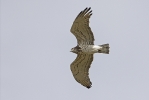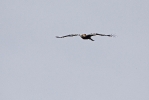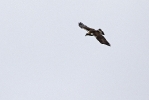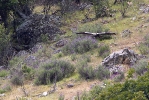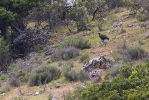The Spanish Imperial Eagle (SIE – Aquila adalberti) is the closest relative of the Eastern Imperial Eagle (EIE – Aquila heliaca). Actually, the two species were separated only in the 1990s. Today they are thought to form a so called superspecies.
The Spanish Imperial Eagle is probably the rarest Aquila species of all. Its breeding population is restricted to the Iberian peninsula, mostly to Spain, with a few breeding pairs in Portugal.
The Spanish breeding population of the Spanish Imperial Eagle have increased more than eight-fold since the mid-1970s and reached 300 breeding pairs in 2011 (38 pairs in 1974 and 317 pairs in 2011) due to positive environmental changes and the outstanding Spanish raptor conservation and research projects.
To me the highlight of our Spanish trip was obviously the Spanish Imperial Eagle. We were lucky enough to observe SIEs five times during less than 4 field days.
We spotted the first bird, a 2nd year eagle near the hilltop built village Alhambra in Castilla-La Mancha as it was slowly gliding and scanning the area fro food.
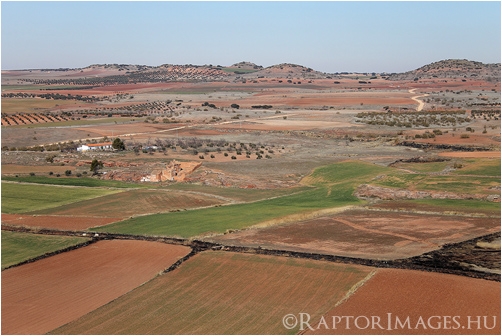
We tried to get closer to it, Nick drove up to the village but the bird had disappeared by then. We stayed on the excellent lookout and were watching the raptors around when the eagle suddenly re-appeared and practically came to us and started circling over.
I insert here a comparative pair of images with a juvenile-plumage Eastern Imperial Eagle.

The difference is quite obvious; the body feathers of the young Spanish Imperial Eagle are almost homogeneous tawny or rufous from below, while in the Eastern Imperial Eagle they are sandy- or buff-coloured and streaked on the upper breast and flank creating an apparent contrast to the pale belly, vent and thighs.
In a territory we could watch an adult SIE pair for a longer time. They showed quite aggressive territorial behaviour to Ravens and mated on a rock in an extremely dry, short-grass basin and roosting there calmly later at dusk (see New images gallery).
We saw an adult female SIE from a likely nearby breeding pair on one of the most popular tourist spot of the Monfragüe NP, the Pena Falcon.
At the end of the trip we found a distant, possible subadult SIE and in another area a 2nd cy SIE hunting in a company of a Golden Eagle. It was interesting to see these birds in an intensively managed agricultural habitat.
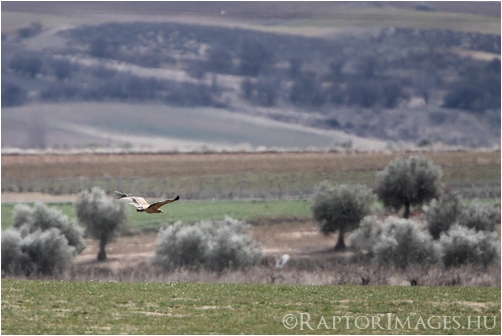
All in all, it was great to watch again Spanish Imperial Eagles.
Best regards,
András

